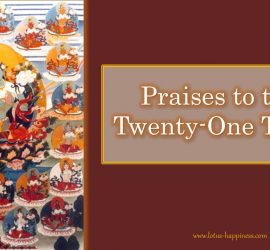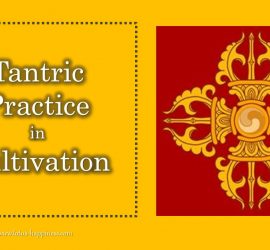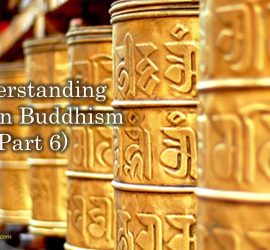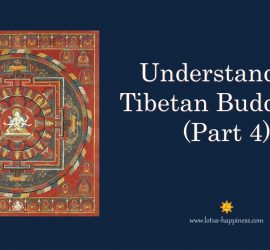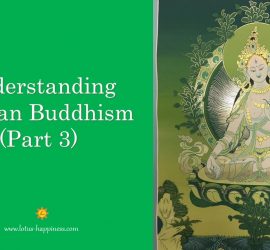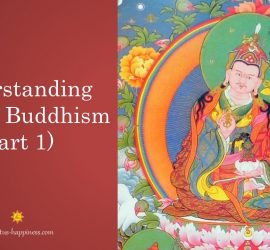Tibetan Buddhist Prayers Prayer is not a mindless, mechanical repetition of sutras or chanting of sutras; it is an opening of our hearts to connect and communicate with our Buddha nature. A successful meditation session, be they silent seated meditation or dynamic vocal chanting, hinges upon our state of mind. […]
Tibetan Buddhism
Praises to the Twenty-One Taras Praises to the Twenty-One Taras is a traditional prayer in Tibetan Buddhism to the female Bodhisattva Tara, also known as Ārya Tārā, or Jetsun Dolma. It appears in the Derge Kangyur as “Offering Praise to Tara through Twenty-One [verses] of Homage” The prayer is found […]
Tantric Practice in Cultivation Dharma of Tantra Buddhism The profound mystical Dharma of Tantra Buddhism is to coordinate mutually and harmoniously the triple activities of the mouth reciting the True Word, the hands posting the symbol of a manta, and the mind entering into profound meditation on mandalas with Form […]
Understanding Tibetan Buddhism (Part 6) Tantric Initiation After the preliminary practices, the formal Tantric practice begins with initiation. Initiation [灌頂] is known as Abhiseka in Sanskrit, which literally means ‘sprinkling’. It is a kind of enpowerment [加持力] by a master called Guru. The emphasis on the need of a guru […]
Understanding Tibetan Buddhism (Part 4) Four schools in Tibetan Buddhism Nyingma Literally, Nyingma means “the ancient ones” thus it represents the traditional school in the ancient transmission period. It is originated from the collaboration between King Trison Detsen and the Indian masters, Shantarakshita and Padmasambhava. As the origin of the […]
Understanding Tibetan Buddhism (Part 3) Tibetan Buddhism and Vajrayana In Buddhism, it can be classified into Esoteric Buddhism [密教] and Exoteric Buddhism [顯教]. In Buddhist doctrines, the latter, also known as Vyukta–upadesa in Sanskrit, emphasizes on phenomenological perception, while the former, also known as Guhya–upadesa in Sanskrit, emphasizes on ontological perception. Amongst the ten great sects of Chinese […]
Understanding Tibetan Buddhism (Part 2) Second dissemination of Tibetan Buddhism The second dissemination of Tibetan Buddhism was brought about by Yeshe O, who was the king in the western part of Tibet. The lineage of lay Vajrayana practitioners still survived after the dark age of Tibetan Buddhism, though the monastic […]
Understanding Tibetan Buddhism (Part 1) Bon religion in Tibet Tibetan Buddhism is considered one of the last great religions still alive in the world today. Tibetan Buddhism is not restricted to Tibet, though this tradition is named after it. It has had great influence to central and northern Asian countries, […]


